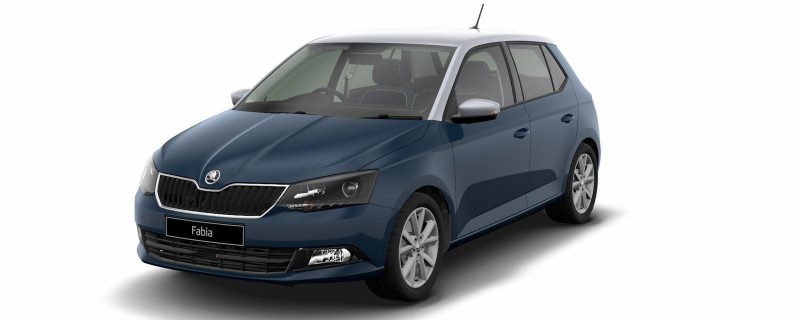Why Subaru moved petite car production stateside
San Diego — Ford has come under withering criticism from President-elect Donald Trump for moving production of its slow-selling Ford Concentrate and plug-in Ford C-Max compact cars to Mexico. The petite Fords go after other manufacturers that produce their compacts south of the border including Nissan, Volkswagen and Mazda.
In addition to labor costs — an estimated $600-per-car cheaper — shipping cars from Mexico to other markets can save thousands in tariff costs because Mexico has more foreign free trade agreements than the U.S.
Subaru is bucking that trend. The carmaker announced earlier this year it is expanding its Lafayette, Indiana, plant to produce its all-new, fifth-generation Impreza compact. The Impreza made its testing debut to media here this month and is now arriving in dealer showrooms.
While political necessity often reduces trade issues to bumper-sticker slogans, the Subaru vs. Ford situation reflects the sophisticated factors that drive plant location in a global market.
However Subaru won’t give precise figures on how many Imprezas will roll out of its big, Three.Four million-square-foot facility, the Indiana plant is expected to meet U.S. request for the popular, all-wheel-drive sedan and wagon. The non-union operation makes 380,000 vehicles a year (including Legacy sedans and Outback crossovers). The previous-generation Impreza was made in Japan.
“Subaru Indiana Automotive has a long history of building high quality vehicles,” says Senior Executive Vice President of SIA Tom Easterday. “Indiana has a very favorable business climate, many Subaru suppliers are located nearby, and we already have the administrative structure in place — so it made sense to expand SIA rather than build a plant somewhere else in North America.”
However Subaru has operated in Lafayette since 1989, SIA was a joint venture with other manufacturers, including Toyota, which produced Camry sedans there. But since its fourth-generation, two thousand eleven debut, Impreza has more than doubled sales from 41,000 a year to more than 100,000 in 2015. Combined with a tripling of overall U.S. Subaru sales since 2008, the company determined to concentrate more production resources in Indiana with a $1.Three billion investment.
“It made sense to use that plant capacity to make the Impreza here,” says Subaru car line product manager Todd Hill, who works at the company’s U.S. headquarters in Fresh Jersey. “Other markets have been experiencing growth, too, so adding that capacity helps us produce more cars for this market.”
Ford, by contrast, has seen its Concentrate sales decline by more than 40,000 units since two thousand twelve in a segment with razor-thin profit margins. Labor costs disproportionality influence puny cars.
“Labor is just one variable in manufacturing a car,” says Bernard Swiecki, senior auto analyst with the Center for Automotive Research in Ann Arbor. “But it is a much higher variable cost in petite cars, which is why their production has been moving to Mexico as their sales stagnate and consumers budge to SUVs.”
Another variable, says Swiecki, is whether a vehicle is “due to leave NAFTA.”
NAFTA is the North American Free Trade Agreement, which eliminates tariffs inbetween Canada, the U.S. and Mexico. But cars made in the United States still have to pay a tariff if they’re exported to Europe. So Audi chose to make its fresh, two thousand seventeen Q5 crossover in Mexico even however it’s a high-margin SUV. Why? Because it can ship to both the U.S. and Europe tariff-free courtesy of Mexican free trade agreements with forty five countries, compared with U.S. trade deals with only nineteen countries.
That $Five,000 tariff savings to Europe on a $40,000 luxury vehicle like the Audi is a big incentive to locate a plant in Mexico. The same incentive drove Nissan south because Mexico trades tariff-free — unlike the U.S. — with South America. Contrary to U.S. political rhetoric, says Sweicki, fewer tariffs would benefit U.S. workers.
Geography also played a role in Subaru’s decision to locate in the U.S., since the puny Japanese automaker operates just two plants: Gunma, Japan, and Lafayette. Ford, meantime, has numerous North America facilities that permit it to optimize plant capacity by playing musical chairs with a broad range of products. As Concentrate vacates the Wayne, Michigan, assembly plant for Mexico, it will be substituted by the fresh Ford Ranger pickup and Bronco SUV.
“If I were a Wayne worker, I would be glad that the Concentrate is going to Mexico and being substituted by trucks,” says CAR’s Sweicki. “With higher request, they are more likely to stay in the U.S.”
Perhaps the fattest reason the Impreza can produce economically in the U.S. is its best-in-class economics. With the highest brand loyalty, highest resale value and highest-in-class safety rating, the AWD Impreza directives unusually high margins among compact cars.
“Subaru is a different brute,” says Swiecki. “It instructions a premium price for the Impreza so it doesn’t have to put incentives on the rubber hood like other automakers to budge its vehicles.”
In addition to the Concentrate, other compact cars made in Mexico for U.S. export include the VW Golf, VW Jetta, Nissan Sentra and Mazda Three. The Chevy Cruze, Toyota Corolla, Honda Civic and Hyundai Elantra are all made in the U.S.
“I think people appreciate that the Impreza is now made in the U.S.,” says Subaru’s Hill. “We have workers here and their jobs are to build cars here.”
Henry Payne is auto critic for The Detroit News
